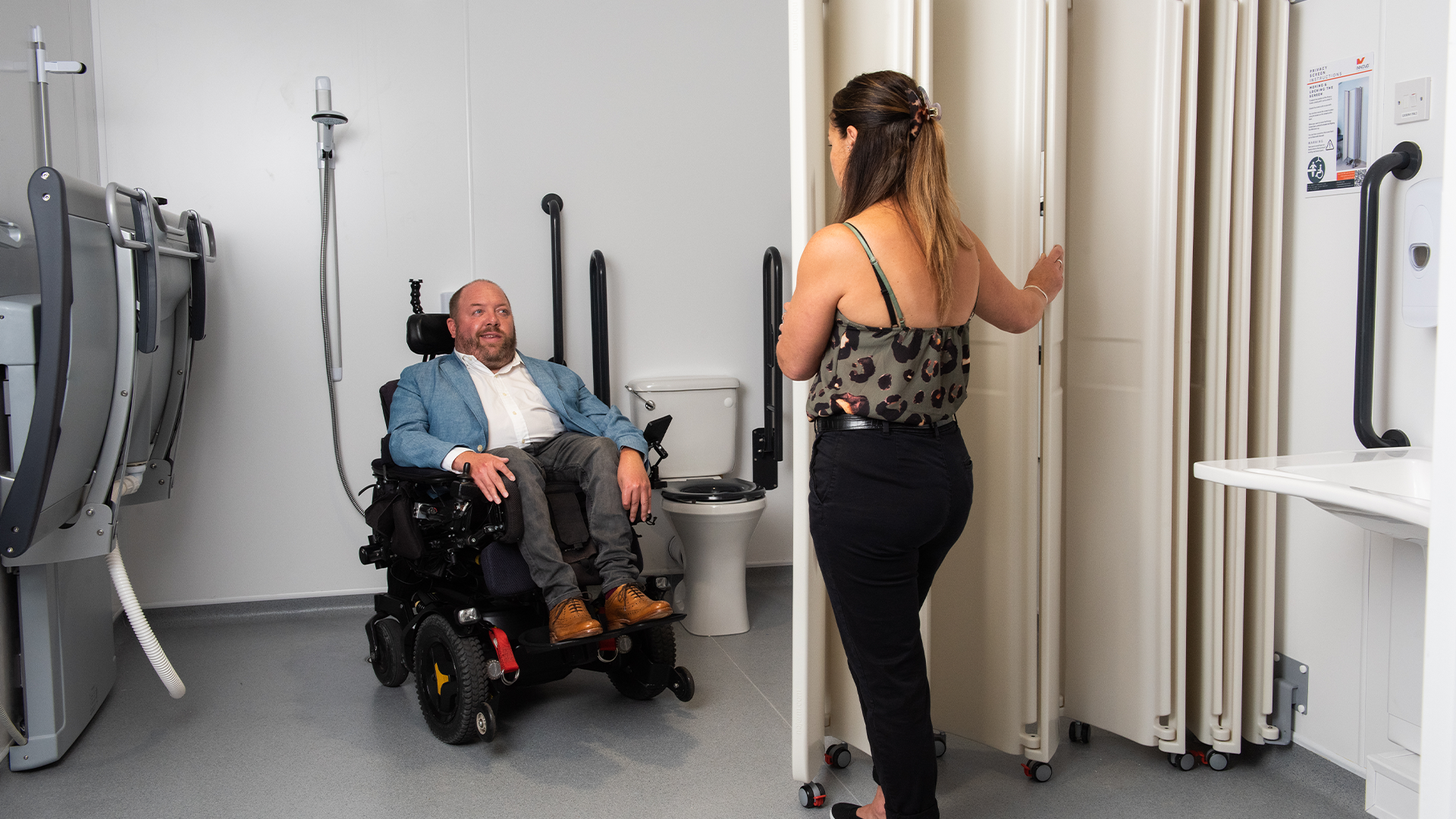Why accessibility leadership matters
In the UK, over 8 million people live with mobility impairments. Many rely on physical aids such as wheelchairs, hoists, powered chairs, walking frames, and specialist toileting equipment to live independently and participate in public life. When environments are not designed with these needs in mind, disabled individuals are excluded, not by their condition, but by poor design.
Accessibility leadership means recognising that people with physical disabilities have as much right to access public spaces, education, workplaces, and leisure as anyone else. It’s not just about removing barriers, it’s about building equity into every environment – especially public ones.
Beyond ramps: designing for real-world needs
While step-free entrances and accessible toilets are important, they are often only the beginning. Businesses that truly lead in accessibility take a proactive, detailed approach to physical inclusion.
Here are just a few examples of equipment and adaptations that demonstrate meaningful accessibility leadership:
- Ceiling track hoists in changing rooms, healthcare facilities, and accommodation, to support people with complex mobility needs.
- Changing Places toilets, which include adult-sized changing benches, hoists, and additional space for carers.
- Height-adjustable desks and kitchen counters making work and communal areas usable by people in wheelchairs.
- Accessible gym and therapy equipment, allowing disabled users to participate fully in health and fitness activities.
- Automatic door systems with wide, clear openings and low-pressure switches or sensor access.
These aren’t luxury extras, they are vital tools that enable dignity, autonomy, and participation.

Embedding accessibility in planning and design
To create truly inclusive environments, accessibility must be embedded from the beginning, not retrofitted as an afterthought.
Accessibility leaders:
- Consult disabled people early: engage with individuals who use hoists, wheelchairs, or adapted equipment to understand what they need.
- Involve occupational therapists and access consultants in the planning phase to identify appropriate specialist equipment.
- Design for carers and support staff, recognising that some disabled users are accompanied and require more space, privacy, and safety considerations.
- Consider flow and dignity, ensuring that spaces are not just compliant, but comfortable, safe, and respectful.
This proactive approach improves outcomes, reduces costly retrofits, and sends a clear message of inclusion.
The business case for physical accessibility innovation
Investing in physical accessibility isn’t just ethically sound, it also makes good business sense.
- Loyalty and reputation: inclusive spaces build brand loyalty and enhance your reputation with customers, staff, and the wider community.
- Wider customer base: families, older adults, and people recovering from injury also benefit from physically accessible environments.
- Future-proofing: demographics are changing. An ageing population means more people will need accessible design features in the years ahead.
By demonstrating accessibility leadership, businesses position themselves as forward-thinking, responsible, and inclusive.
Creating a culture of inclusion
Physical accessibility is not just about architecture or equipment, it’s about culture. Businesses that succeed embed accessibility into their values and operations:
- Train staff to understand how to use specialist equipment like hoists safely and respectfully.
Create accessibility champions across teams to ensure inclusion stays front of mind. - Regularly audit facilities and seek feedback from disabled users to identify gaps and opportunities.
Conclusion
Physical disability doesn’t have to mean exclusion. With thoughtful design and the right specialist equipment, businesses can ensure that all people, regardless of mobility, can access and enjoy their services fully.
Accessibility leadership means taking bold, informed steps towards a world where everyone has equal access to opportunity, dignity, and independence.
FAQs
What is accessibility leadership in physical design?
Accessibility leadership means going beyond minimum legal standards to create spaces that actively support disabled people, particularly those using mobility aids and specialist equipment like hoists or adapted seating.
What kind of specialist equipment should inclusive spaces include?
Common examples include ceiling track hoists, Changing Places toilets, height-adjustable workstations, adapted kitchen units, automatic doors, and accessible gym equipment.
Who can help plan physically accessible environments?
Consulting with access consultants, occupational therapists, and lived-experience experts is crucial when planning inclusive spaces that accommodate specialist equipment.
Why are Changing Places toilets important?
They provide essential facilities, such as hoists and adult changing benches, for people with profound and multiple disabilities. Standard accessible toilets are often insufficient for these needs.
Is physical accessibility only relevant for customer-facing spaces?
No; workplaces, staff rooms, meeting areas, and service entrances must also be physically accessible to ensure equal employment and participation opportunities.




